Arbotchery
An illustrated catalog of abuse taking place across the country, in cities large and small, where trees are being hacked, whacked, and chopped into unnatural shapes in the name of power.
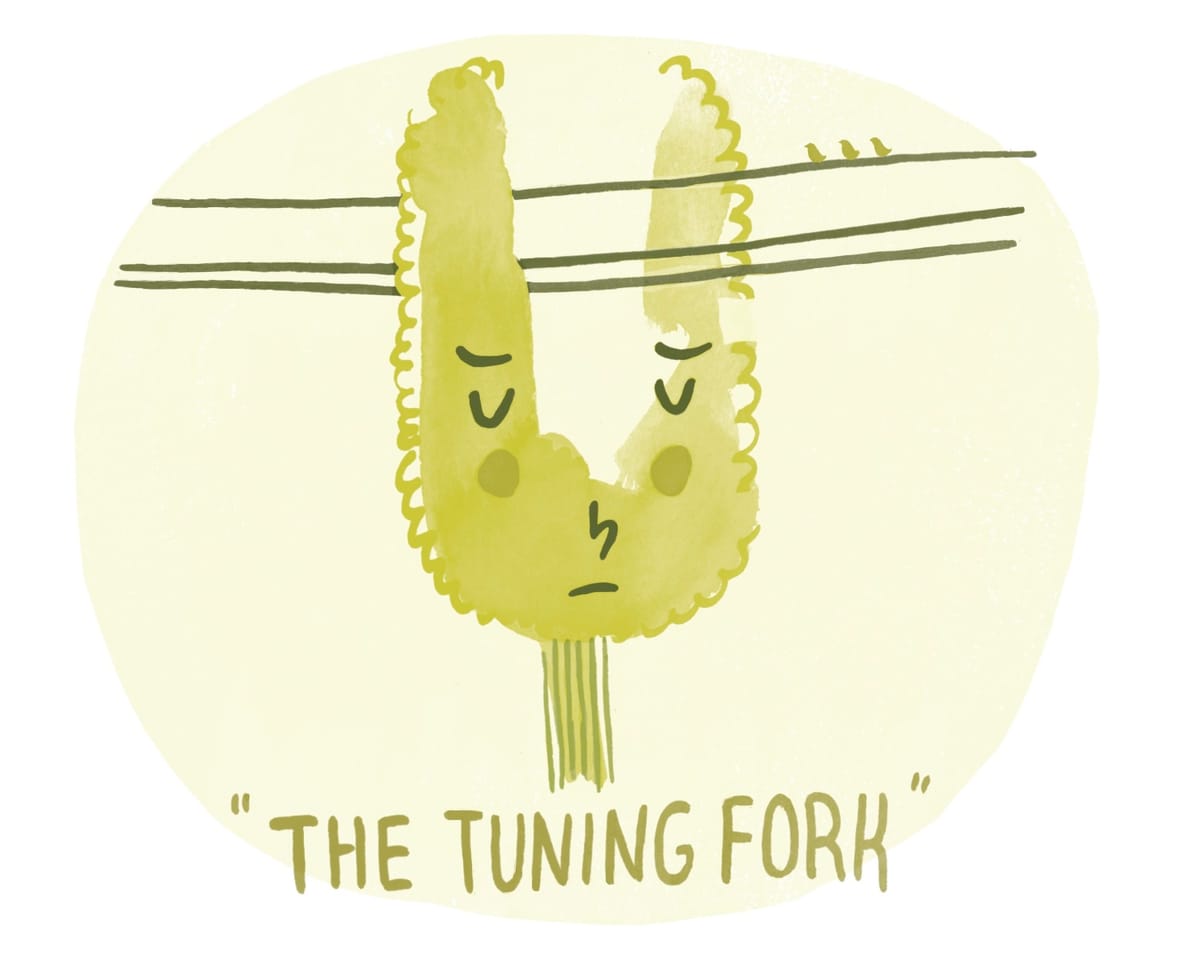
When I moved back to the United States after living in England for a few years, I couldn’t stop noticing the wires overhead. Europe rebuilt itself after World War II and tidily put its telephone and electrical wires underground. The U.S. did not have the same need to rebuild, so our wires remain largely in the air. I hadn’t realized how American the telephone pole had become.
The wires are unsightly, but even worse are the trees badly pruned to make room for them. Very badly pruned. As I was trying to settle into my new home in Virginia, I didn’t know what to make of the butchered slopes of evergreen along the airport road, the sickled oak by the car dealership, the fork-shaped trees down West Main; there was such a variety of unconscionable shapes, I needed a word for it. I couldn’t believe we treated our trees this way. Pruning, trimming, cutting—none of these came close to describing what was going on.
So I made up my own word: arbor + butchery = arbotchery. Definition: the severe and heartless pruning of trees around power lines, leaving them stunted and misshapen forever.
I haven’t seen an arbotchery Table and Chair next to each other yet, but I’m sure it’s only a matter of time.
A few months later I had to hire a company to trim some dead wood out of a Norway maple in my front yard. When Dave, the company’s tree expert, arrived, I asked him if he ever did the pruning around power lines.
He shook his head. “Any pruning to a tree that is not cutting out dead wood is a wound. And just like humans, a tree can better withstand six small wounds better than one big one.” He held his hands in a circle the size of a poker chip then slowly opened his arms until the circle was the size of a dart board.
“I work for tree health,” he said, then added ominously, “The power company has a different goal.”
From then on, I noticed arbotchery everywhere. Sometimes a mature tree is arbotched, and sometimes it happens when the tree is still young and the canopy adapts, producing outlandish shapes. By the time I remembered Ian Frazier’s warning in his “Bags in Trees” essays—“Be careful what you notice,” he cautions, explaining how he lost many weekends freeing trees of their “fright wigs,” the plastic bags stuck in the branches—it was too late. I was already documenting arbotchery and mourning ruined trees wherever I saw them. Here, then, is the first-ever taxonomy of common arbotchery shapes.
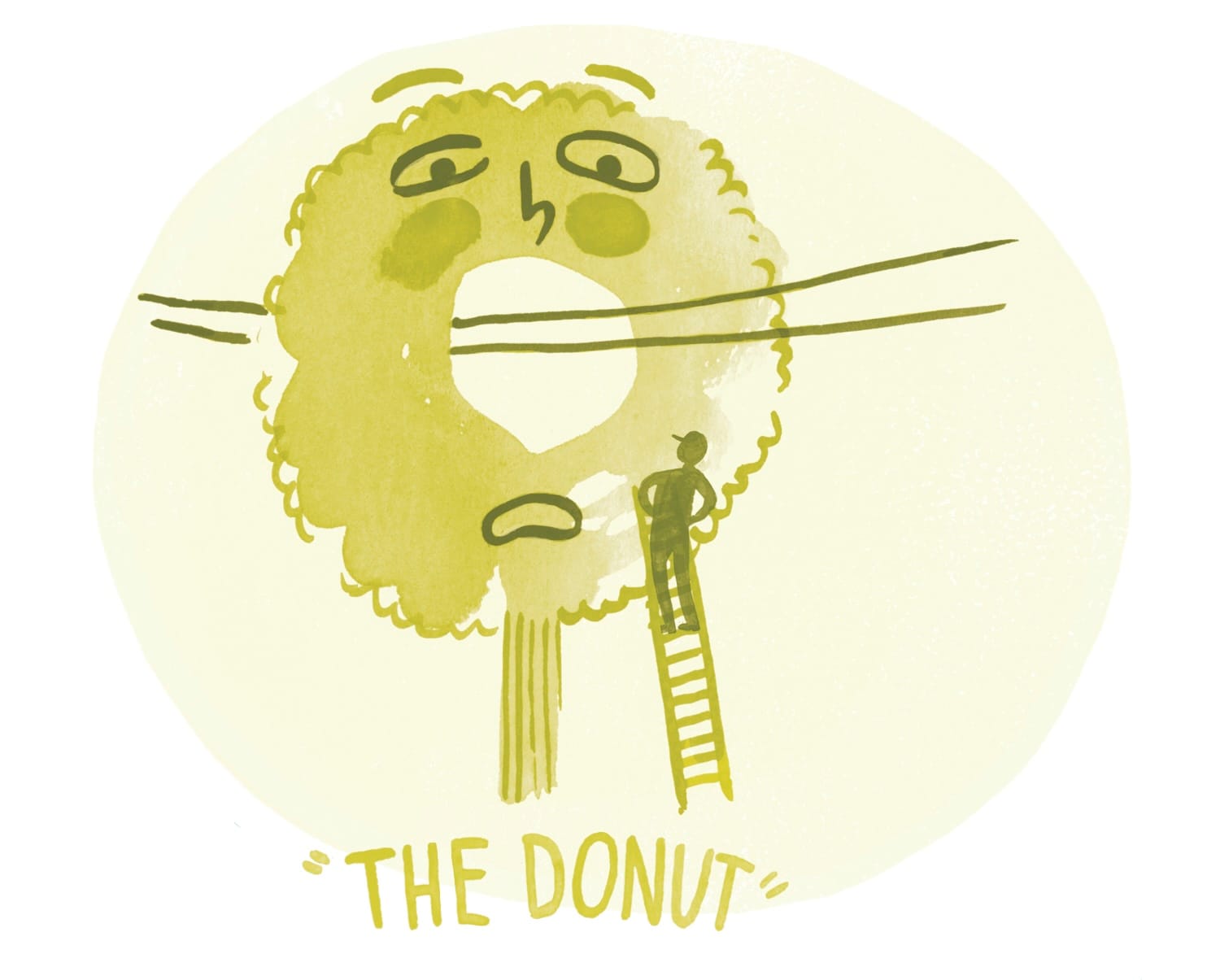
The Donut: Dave explained to me that when power lines heat up, they sag. And when the wind blows, they move back and forth and up and down. The power company insists on keeping 10 to 15 feet clear around the wire, for safety and to protect service. Sometimes the donut is the result of a top-pruning in which the sides have grown back and met again over the wire. Other times, behind on their pruning schedule, the power company will just cut a hole through the canopy of the tree to keep the wire clear. Frankly, I think any worker who could do this to a tree deserves never to eat another donut again.
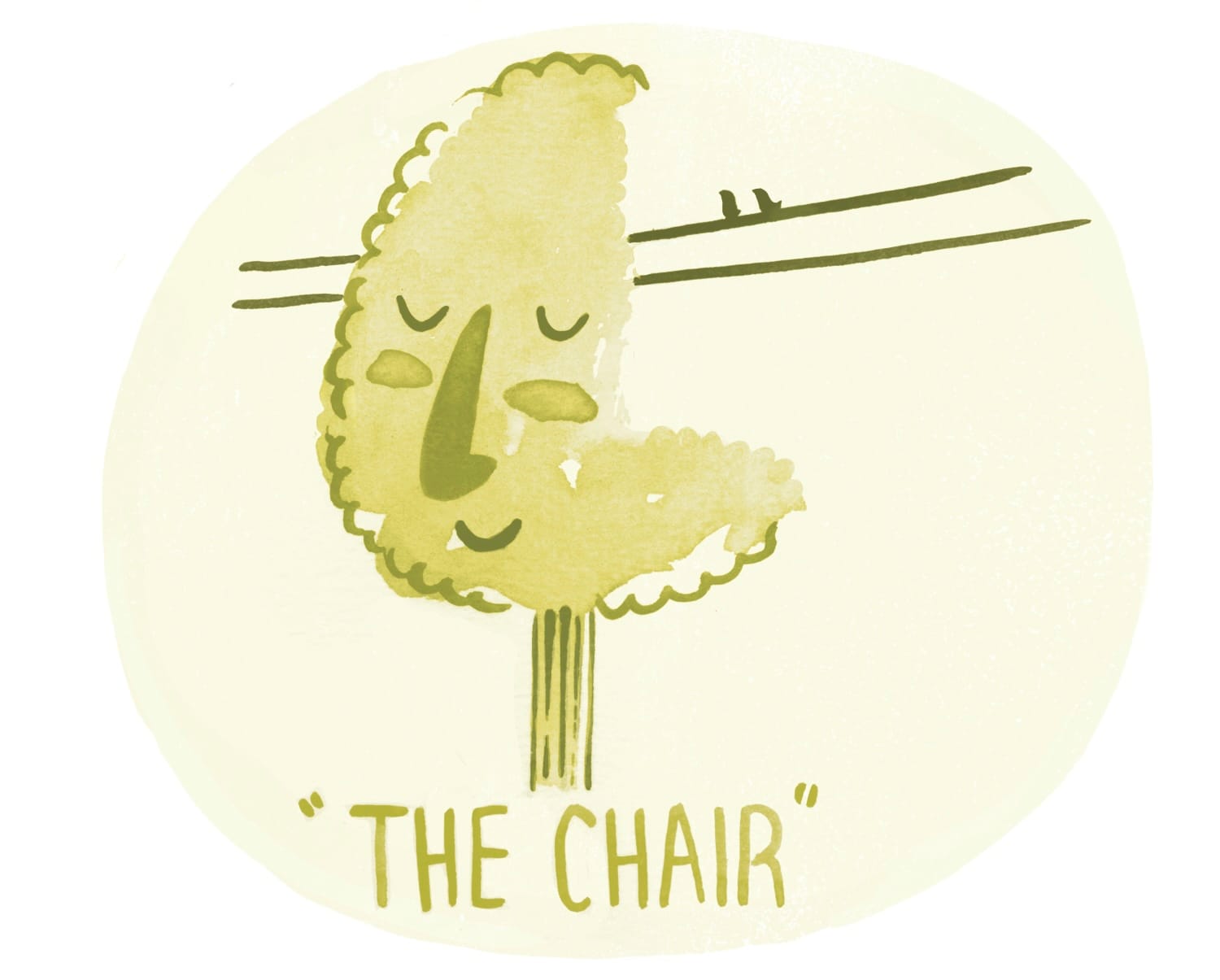
The Chair: If you Google “tree-trimming around power lines” you will find a war is being waged across the land, played out mostly in community newspapers. Power companies trim trees badly; property owners, left with a ridiculous-looking tree, claim decreased property values and despair. The local papers run photographs of the disputed trim job, the power companies agree to look into making more careful cuts next time, and the whole process repeats itself year after year. When I look at this cut, I see a nice seat for the Jolly Green Giant. Once I saw the Chair and the Ramp (see below) combined into what could only be called the Recliner.
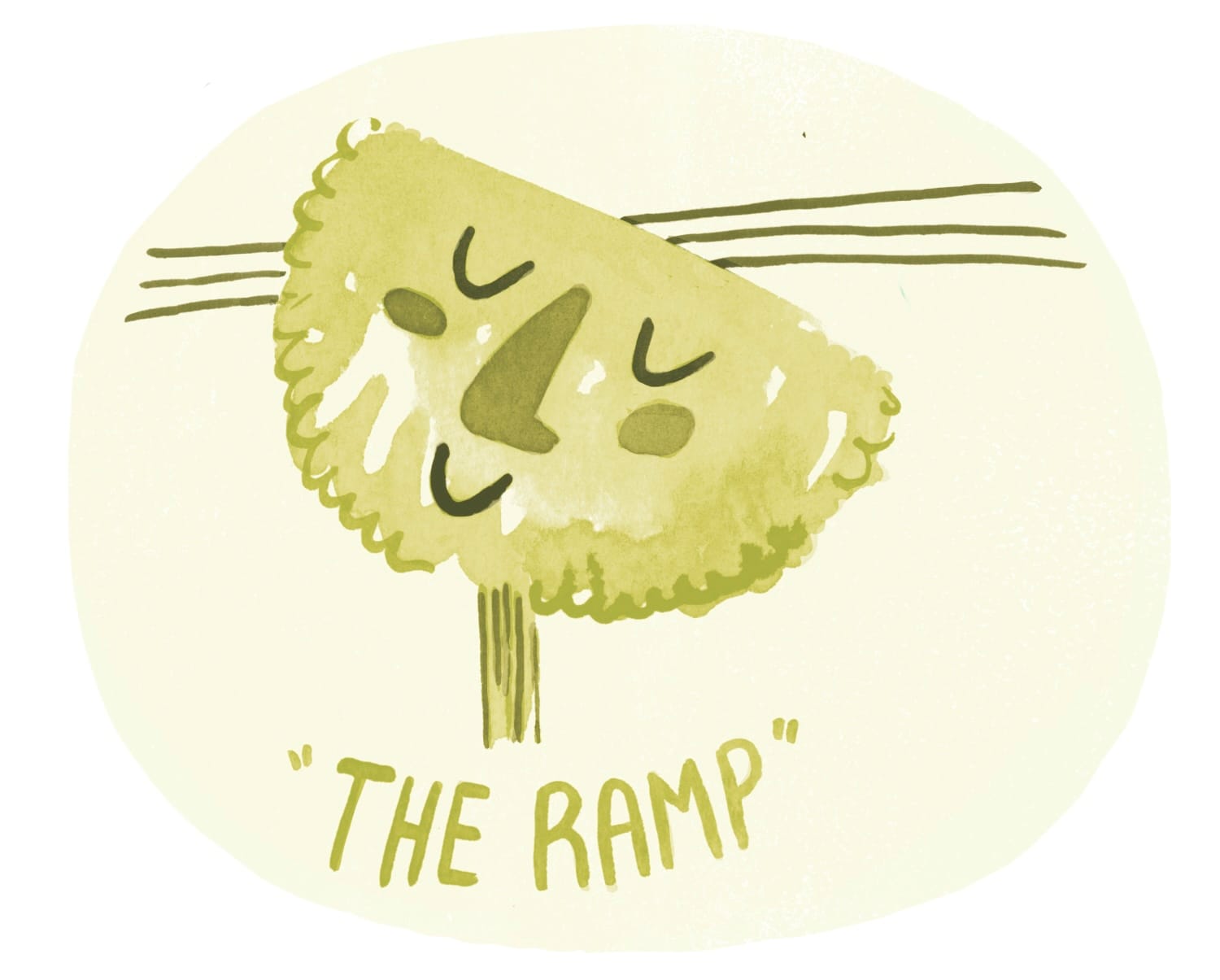
The Ramp: A lot of arbotchery is the result of tree companies being paid by the mile for the work. Cities often hold an open bidding process and accept the lowest bid. Dave explained it is often possible to do the needed pruning without making bad cuts, but the people doing the work are unskilled and moving too fast. I like to pretend the ramp is the effect of wind shear. I hope the tree feels like it’s surfing.
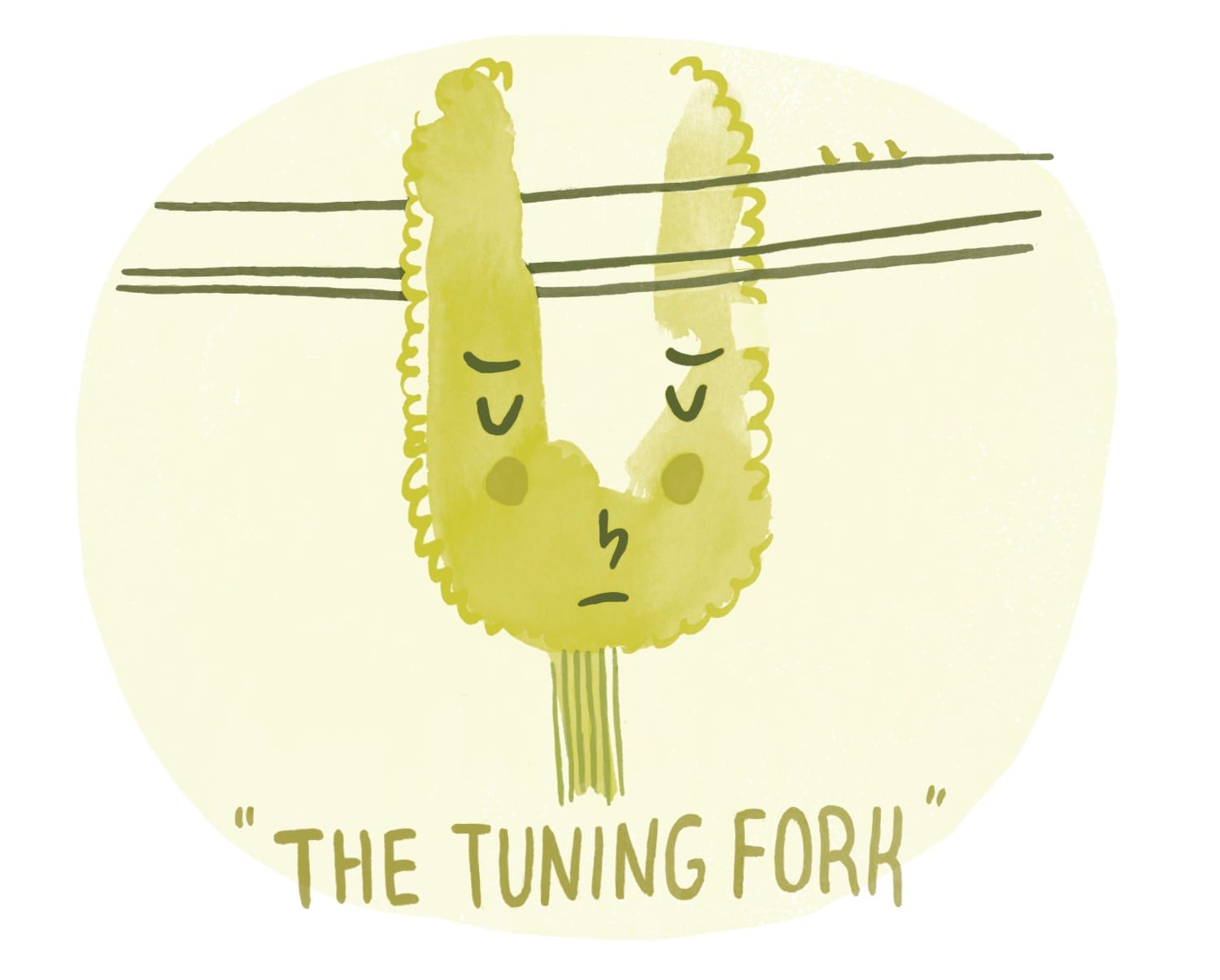
The Tuning Fork: Sometimes arbotchery occurs as a sort of serial crime: A whole row of trees will be sacrificed to one wire. One of the worst such cases I’ve seen is the Zelkova trees down West Main in Charlottesville. A hardy tree considered a good substitute for the American elm, the Zelkova has a natural V-shape to it. Perhaps the company that turned a whole street of them into a chorus line of tuning forks was trying to take advantage of this fact.
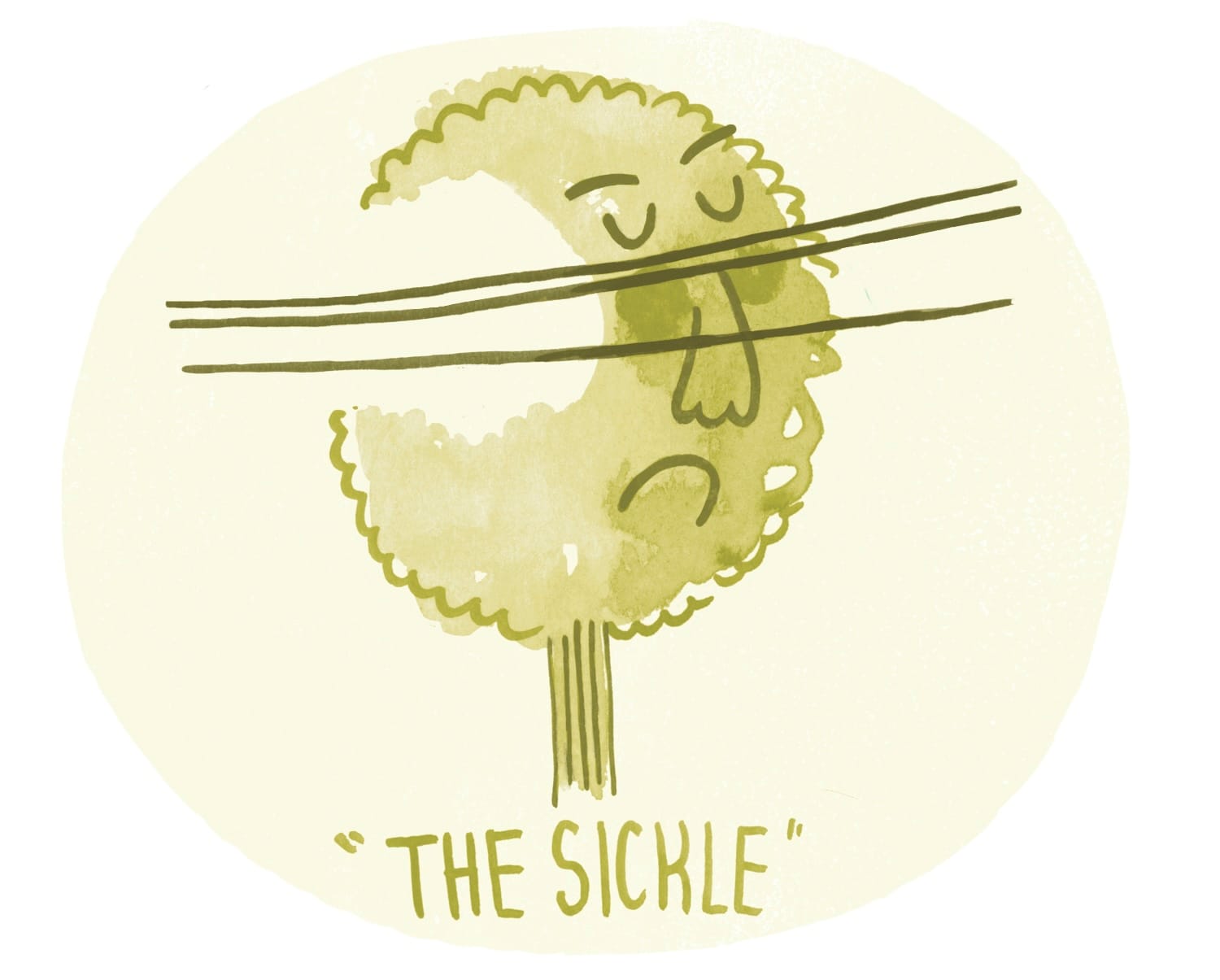
The Sickle: A tall oak in the shape of a perfect sickle stood on the side of Route 29 in Charlottesville when I lived there. Route 29 is like a lot of roads leading into small towns that tightly zone their historical cores. It’s the spare room of the house, the place where you put everything you only use once in a while but aren’t willing to give up entirely. It’s where you keep your car dealerships, your fast food joints, your odd little strip malls, your Costcos and Sam’s Clubs. No pedestrian life at all, just a chute for cars running errands. Every time I passed the sickle, I thought about communism.

The Table: I haven’t seen an arbotchery Table and Chair next to each other yet, but I’m sure it’s only a matter of time.
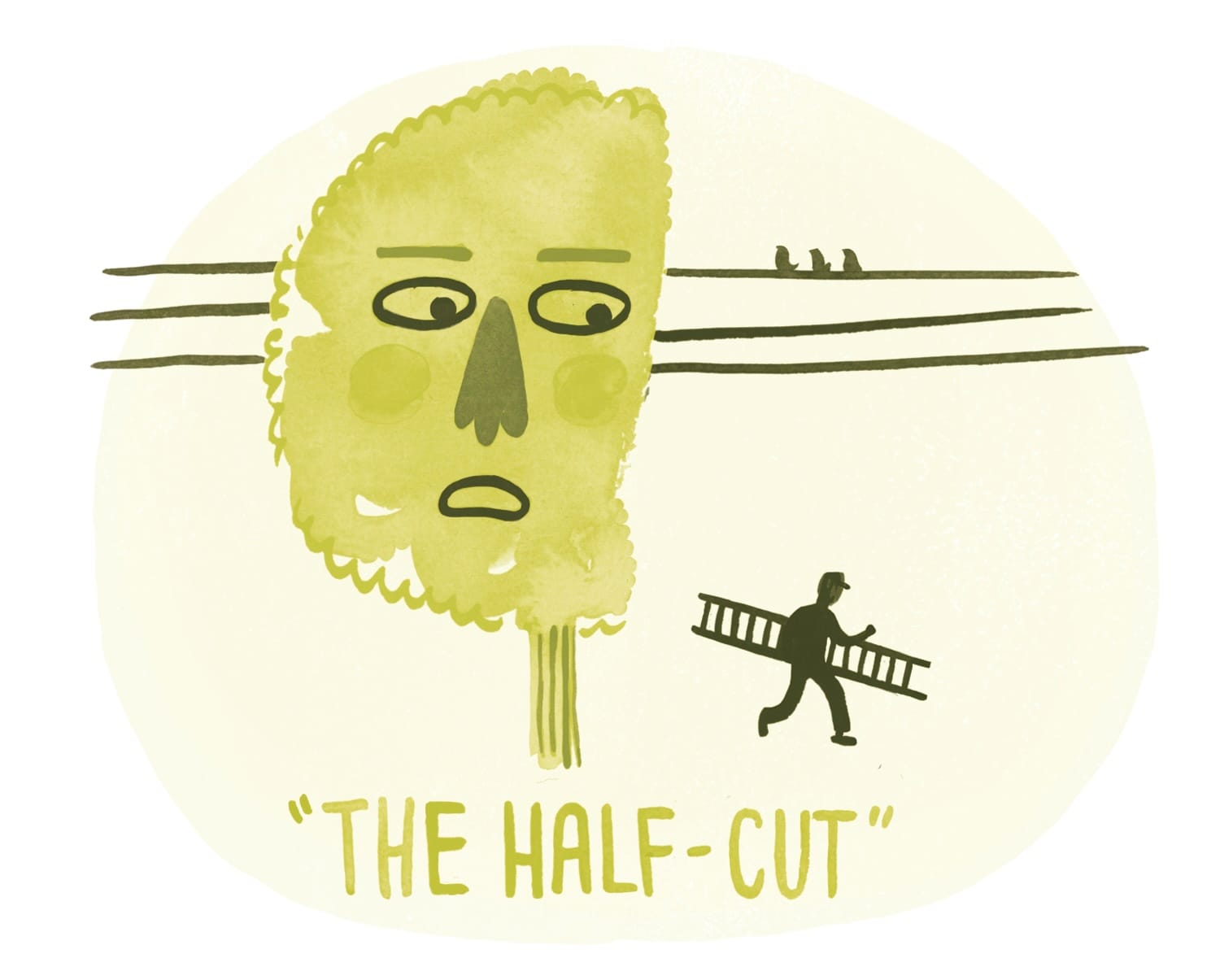
The Half-Cut: Of all the shapes, this is the one that perhaps most calls into question the “trimming for safety” argument. A tree pruned like this is unstable and is much more likely to fall over during a wind storm. I would rather take my chances with a few branches close to a power line than have a tree in this condition near my house.
I moved away from Virginia a few years ago and gave up my claim to owning trees. I can’t stop noticing arbotchery, though. I long for little memorial plaques I could nail to all the ruined tree trunks. The plaques would have a silhouette of the tree’s typical, unarbotched shape, illustrating for passersby the disparity between the natural tree and the monstrosity before them. Why do we let arbotchery rage unchecked? Studies have shown there’s a link between gardens and community strength. What if there’s a link between tree health and public sanity?
So if I make the plaques, will you help? Does anyone have Ian Frazier’s number?
